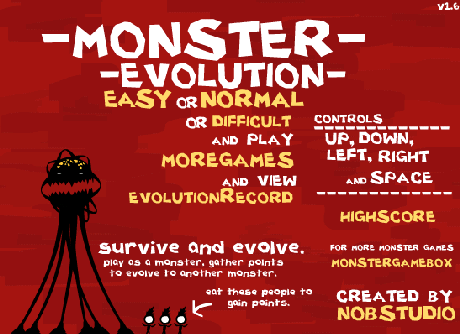With the approach of Halloween we are getting some good spook stories. Most are categorized as “superstition.” While some claim that superstitions have nothing to do with religion, there is a common denominator: invisible agent beliefs. Humans generate invisible agents so easily and habitually that it’s hard not to agree with byproduct theorists who claim they are the (empirically false) products of ordinary cognition. Because such errors are given massive cultural reinforcement, we get everything from scary to sacred spooks.
Some, however, are more entertaining and innocuous than others. Case in point: Icelanders who believe in elves. I love this Atlantic story by Ryan Jacobs. Elves are to (some) Icelanders as animals are to hunter-gatherers: human-like. They have their own societies and do everything that humans do. They have the same feelings, needs, and motivations. There is another parallel — Icelandic elves and game animals are avatars for natural awareness:
Björnsson speculated that the stories are used to express “a sort of primitive environmentalism.” In a way, they represent a special connection with the natural landscape that is otherwise difficult to articulate. Haukur Ingi Jónasson, a professor in project management at Reykjavík University who wrote about elves during his graduate studies in theology and psychoanalysis at the Union Theological Seminary in New York, says Iceland’s many mountains, hills, and rivers are loaded with significance for the people who live near them. “[Elves are] kind of a ritualistic attempt to protect something meaningful, respect something of importance, and acknowledge something of worth,” he said. In other words, the elves honor a balance of power that has always leaned clearly in the direction of nature and the whimsy of its erupting volcanoes, shifting glaciers, and quivering ground. ”We are kind of always at the disposal of something that is not us,” he said. “It’s it. It’s nature. It’s out there. I cannot control it, it’s it that I have to comply with.”
As industry has encroached, Jónsdóttir insists, many humans have forgotten about “the inner life of the earth” as they bend it to their will. When elves act out, they are doing more than just protecting their own homes, they are reminding people of a lost relationship. “They’re protectors of nature, like we humans should be,” she said. “We have just forgotten.”
All this makes me wonder whether Icelandic elves are culturally descended from from animist ancestors. Evolving elves are much more to my liking than vampires and mummies. In this Atlantic piece, Olga Khazan avers that “ignorance about decomposition and disease sparked fears that the dead returned to drink the blood of the living.” There are of course good biological reasons for being disgusted, if not fearful, of dead and decomposing things. The whole drinking blood thing is another matter. It’s obviously a powerful trope, whether it’s being done by vampires or Christians.
As for mummies, they have never captured my imagination. This may have something to do with seeing too many badly bandaged people in B-films. Do directors really think that rigor mortis requires mummies to herk and jerk like that? A mummy’s curse, however, is (as Jo Marchant explains over at Aeon) another story. This one has an anthropological angle that involves Egyptian tomb raiding and premature death:
Fashions have changed since then, but Tutankhamun’s curse has persisted and evolved. By the 1970s, it provided inspiration not only for novels and horror films but also for a stream of supposedly factual books and documentaries. Instead of vengeful ghosts and the waking dead, the focus shifted to the physical mechanisms by which the Egyptians might have booby-trapped a tomb — perhaps with the help of aliens. The chief theorist here was Erich von Däniken, a Swiss writer (and convicted fraudster) who sold more than 60 million books, starting with Chariots of the Gods? (1968). He argued that extra-terrestrials visited the Earth thousands of years ago, building monuments including the Great Pyramids at Giza and furnishing ancient people with technologies such as the electric lightbulb (which he claimed to see represented in ancient Egyptian reliefs), as well as with the inspiration for their pantheon.
Just as it was in the 1920s, the popularity of the curse in the 1970s was fueled by a troubled relationship with science. If there were previously anxieties that science was venturing beyond its proper bounds, this time, just a few years after the glamour and promise of the moon landings, there was a sense that it had somehow stalled. Following such a dramatic demonstration of the vast potential of space travel, people looked for answers not to God or the spirit world, but to aliens. In 1976, the US anthropologist John T Omohundro analysed the popularity of Däniken’s ideas in the journal Skeptical Inquirer, and concluded that the ‘we are not alone’ attitude was a rebellion triggered by ‘[a] frustration with science’s not having delivered all that it promised, a distaste for the specialisation of scientific research, and a continuing need to believe in an intelligence beyond our own’.
All of which brings us to the cultural present, in which aliens are the spooks du jour. It’s a sad commentary on our culture when millions of people think they are learning about anthropology when they watch “Ancient Aliens.” Anthropologists who can’t be bothered with public outreach are at least partially to blame.
As for the remainder, we can chalk it up to the normal functioning of human minds. It takes substantial and sustained effort to overwrite that function. Because most people are not (for personal and cultural reasons) inclined to such effort, invisible agents won’t disappear anytime soon.


